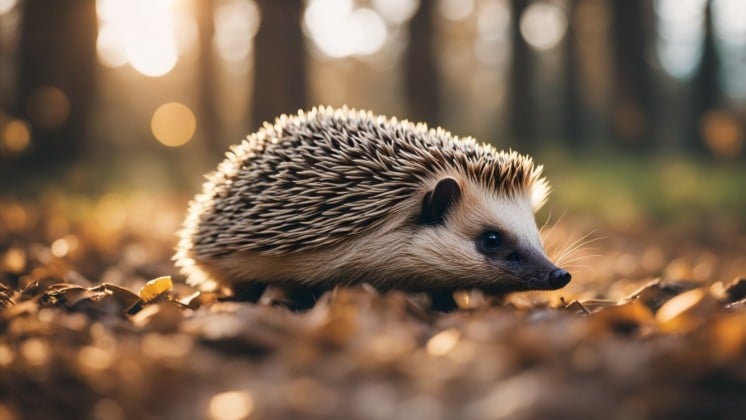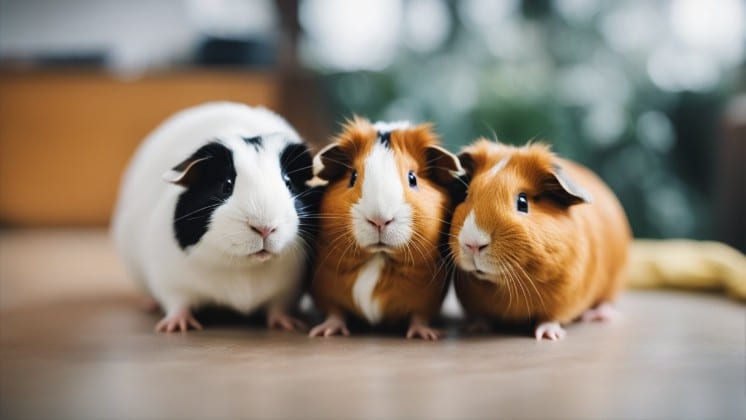For chinchilla owners, a key question is whether these exotic pets enjoy physical contact like holding. As prey animals, chinchillas’ natural instincts are to avoid potential danger. Their first reaction is flight from unfamiliar people and situations.
However, with patience and bonding over time, some chinchillas can learn to tolerate brief handling from trusted owners.
This article explores a chinchilla’s perspective on human interaction and how their needs and cues offer insight into comfort levels around holding. The goal is to determine what can help answer whether chinchillas like to be held.
Key Takeaways
- Chinchillas are naturally cautious prey animals but can form close bonds with owners through proper socialization.
- Signs a chinchilla trusts its owner include willingly approaching, accepting handling without struggling, grooming/licking, and making happy noises.
- Chinchillas communicate affection through behaviors like bumping heads, grooming, accepting gentle pets, chirping/purring, playing, and seeking attention from their owner.
- While not naturally inclined to being held, some chinchillas can learn to tolerate brief handling from trusted owners they have strongly bonded with over time.
Are chinchillas cuddly?
Chinchillas are known to be cuddly and enjoy human interaction, especially if they have been properly socialized from a young age. However, they also have their own unique personalities, so some chinchillas may be more inclined to cuddle than others.
Prey Animal Instincts
As prey animals, chinchillas are naturally cautious and easily frightened. They have a strong instinct to hide from potential predators and avoid situations that could put them in danger. This can make them seem skittish and nervous, especially when they are in an unfamiliar environment or around new people.
Signs of Trust and Affection
While chinchillas may be naturally cautious, they are also capable of forming strong bonds with their owners. Some signs that your chinchilla trusts and likes you include:
- Approaching you willingly
- Allowing you to handle them without struggling
- Licking you or grooming you
- Making happy noises, such as chirps or purrs
Socialization and Bonding
Socialization and bonding are important for developing a strong relationship with your chinchilla.
Spending time with your chinchilla every day and offering treats can help build trust and encourage socialization.
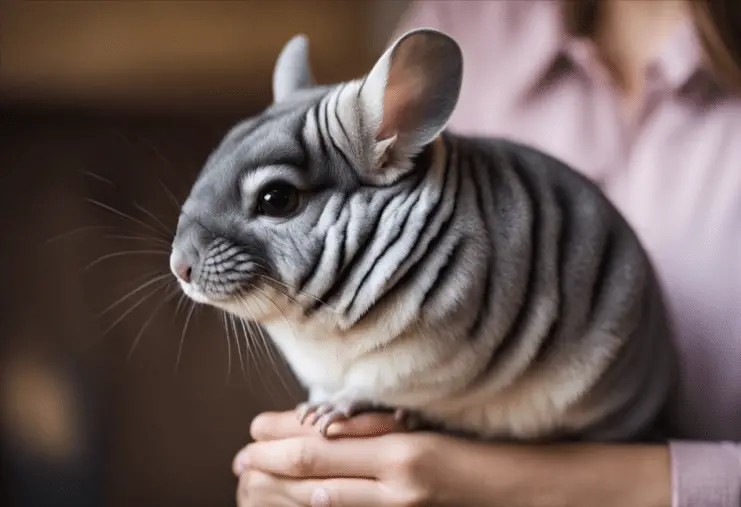
It’s also important to pay attention to your chinchilla’s body language and personality, as each chinchilla is unique and may have different preferences when it comes to handling and interaction.
How Do Chinchillas Show Affection?
Chinchillas bond closely with their human caregivers if properly socialized from a young age.
While they may seem shy or aloof at first, chinchillas are capable of forming strong emotional attachments. Some clear signs that a chinchilla feels affectionate toward its owner include engaging in gentle physical contact and displays of trust and comfort.
Some common behaviors chinchillas exhibit to demonstrate their affection include:
- Bumping/leaning – Chinchillas will often bump their head or lean against their owner as a sign of affection. This is their way of seeking physical contact.
- Grooming – Chinchillas will groom each other as a bonding activity. If a chinchilla grooms its owner, it sees them as part of its social group.
- Accepting pets – If a chinchilla remains still and seems to enjoy gentle petting, it indicates trust and comfort with its owner. Jerky movements mean it’s not enjoying contact.
- Chirping/purring – Chinchillas may make soft chirping or purring noises when content, which is a sign of affection towards their owner.
- Jumping on/near owner – Some chinchillas will joyfully jump on their owner or nearby as a friendly greeting when their owner comes into view.
- Playing – Chinchillas that feel secure may playfully nip or chase the hands/arms of their owners in a gentle, non-aggressive manner during playtime.
- Seeking attention – A chinchilla who actively comes to its owner for attention like treats or pets clearly feels affectionate toward that person.
Do Chinchillas Enjoy Being Held?
Chinchillas are social animals, but they are not naturally inclined to be held and cuddled. They are prey animals, and in the wild, they would be picked up by predators.
Therefore, they may feel threatened when they are held or picked up. However, with proper training and socialization, chinchillas can learn to be comfortable with being held.
Where do chinchillas like to be pet?
Chinchillas have preferred areas where they enjoy being petted by their owners. Some good spots to gently pet a chinchilla include:
- The head and neck area – As long as the chinchilla is comfortable with handling, it may like light strokes on the head, ears, and neck. Avoid the base of the ears.
- The lower back – Gently rubbing or scratching the lower back area is typically pleasant for chinchillas. Avoid petting the top of the back near the shoulders.
- The tail – Some chinchillas enjoy having their tail gently brushed or stroked from base to tip. Others are more sensitive there.
- The cheeks – Lightly rubbing both cheeks with one finger can be a soothing spot if the chinchilla is tame. Go slowly at first.
- The front paws – Gentle strokes on the front paws and lower legs are usually safe areas to pet. Avoid touching the paw pads.
It’s best to let the chinchilla get used to handling and petting over time. Watch its body language – ears forward and stillness generally means it’s enjoying the contact.
The minute it shows signs of distress like twitching, moving away, or nipping, stop petting and give it space. Go slow and let the chinchilla set the pace. Their favorite spots may change based on their mood too.
Proper Ways to Pick Up and Hold Chinchillas
When you pick up a chinchilla, it is important to support their body properly. Chinchillas have delicate bones, and if they are not supported properly, they can get injured.
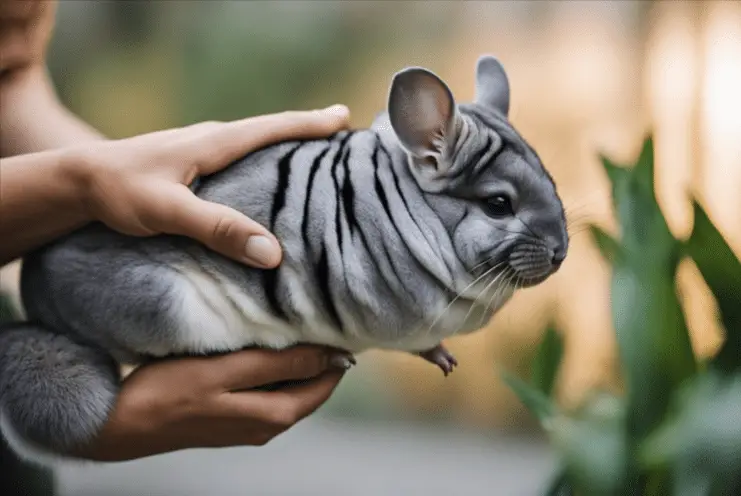
The proper way to pick up a chinchilla is to place one hand under their chest, just behind their front legs, and the other hand under their hindquarters. Lift the chinchilla gently, but firmly, and hold them close to your body.
Understanding Chinchilla’s Body Language
Chinchillas communicate through body language, and it is important to understand what they are trying to tell you.
When a chinchilla is happy and relaxed, they will sit still and may even close their eyes. When they are uncomfortable or scared, they may try to hide or run away. If a chinchilla is struggling or trying to get away, it is important to put them down and try again later.
Creating a Comfortable Environment
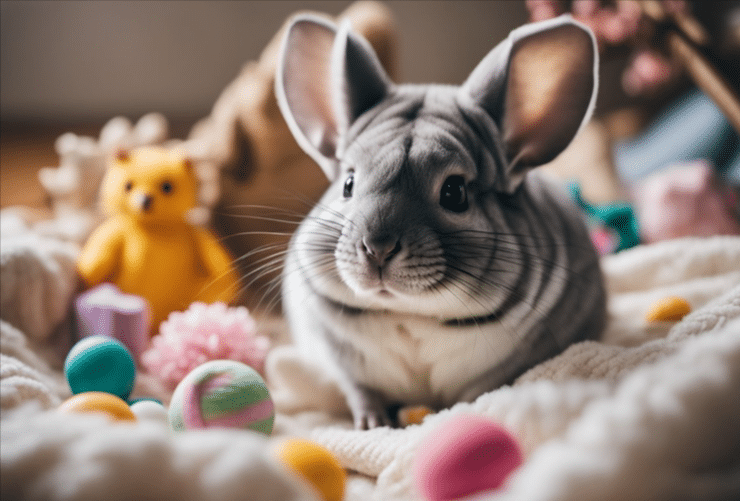
As an owner of a chinchilla, it is important to create a comfortable environment for your pet to thrive in. Here are some tips to help you get started.
Chinchilla Cage Setup
The first step is to set up a proper chinchilla cage. Chinchillas need plenty of space to move around, so make sure the cage is large enough for your pet to run and jump. A minimum size of 24″ x 24″ x 24″ is recommended for one chinchilla, but larger is always better.
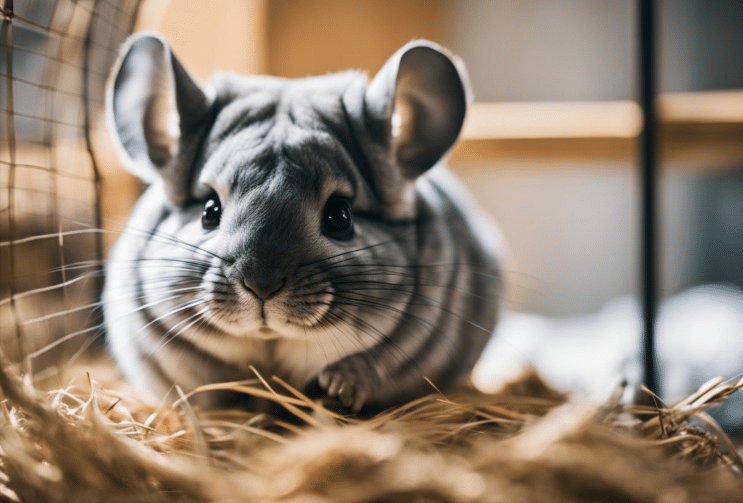
Line the cage with bedding made of aspen shavings, paper-based products, or fleece. Avoid using cedar or pine shavings, as they can be harmful to your chinchilla’s respiratory system. Provide a hiding house or box for your chinchilla to retreat to when it wants to be alone.
Importance of Dust Baths
Chinchillas need to take dust baths to keep their fur clean and healthy. Provide a dust bath container filled with chinchilla dust, which can be purchased at pet stores or online. Place the container in the cage for 15-20 minutes a day, two to three times a week. Remove the container after use to prevent your chinchilla from using it as a litter box.
Exercise and Playtime
Chinchillas are active animals and need plenty of exercise and playtime. Provide toys such as chew sticks, wooden blocks, and cardboard tubes for your chinchilla to play with. Consider setting up a playpen outside of the cage for your chinchilla to explore and play in.
An exercise wheel is also a great addition to your chinchilla’s cage. Make sure to choose a solid-surface wheel, as those with rungs can cause injury to your chinchilla’s feet. If you have more than one chinchilla, make sure to provide multiple exercise wheels to prevent fighting over them.
Frequently Asked Questions
How should a chinchilla’s cage be set up for optimal comfort?
Chinchillas are active animals that require plenty of space to move around. Therefore, their cages should be at least 3 feet wide, 2 feet deep, and 2 feet tall. The cage should have multiple levels with ramps or shelves to allow the chinchilla to climb and play. It is important to use a dust bath to help the chinchilla keep its fur clean and healthy. Additionally, provide your chinchilla with fresh water and hay at all times.
Is it better for chinchillas to live alone or with a companion?
Chinchillas are social animals that thrive in pairs or groups. It is recommended to keep two same-sex chinchillas together to prevent unwanted breeding. However, it is important to introduce chinchillas slowly and carefully to avoid fights and injuries.
What is the typical lifespan of a chinchilla in captivity?
Chinchillas can live up to 15 years in captivity with proper care and attention. However, their lifespan can be affected by various factors such as diet, exercise, and genetics.
Can chinchillas be considered affectionate pets?
Chinchillas are not naturally affectionate pets and may not enjoy being held or cuddled. However, they can bond with their owners and show affection in their own way. Chinchillas may enjoy being petted or scratched behind the ears.
What are the pros and cons of keeping chinchillas as pets?
The pros of keeping chinchillas as pets include their adorable appearance, low-maintenance care, and long lifespan. They are also relatively quiet and do not require much space. However, chinchillas are not naturally affectionate and may require patience and time to bond with their owners. They can also be prone to health issues such as dental problems and fur chewing.
How do chinchillas communicate their affection to their owners?
Chinchillas communicate their affection through body language such as licking, grooming, and following their owners around. They may also make soft noises or chirps to show contentment.
Conclusion
While chinchillas seem shy at first, they can form strong bonds with patient owners through trust and bonding over time.
Seeing signs of relaxation, like soft noises and seeking attention, shows a chinchilla that feels safe. With the right environment and positive reinforcement, the bond between the chinchilla and the owner grows into a very affectionate relationship filled with happy interactions.



